Reactive Power Optimization for Distribution Network Based on Distributed Random Gradient-Free Algorithm
Abstract
:1. Introduction
2. Problem Formulation
2.1. Objective Function
2.2. Operation Constraints
3. Distributed Random Gradient-Free Algorithm
4. Reactive Power Optimization Based on Distributed Random Gradient-Free Algorithm
4.1. Distributed Reactive Power Optimization
4.2. Algorithm Flow
- Input data including the coefficients of cost functions, various limits of the DNs’ power output, the total load demand, etc. The maximum available reactive power output is satisfied with Equation (5).
- The optimization variable is initialized, according to references [11]. Then, set up the smoothing coefficient of the objective function and generate the random sequence.
- According to formula Equations (2) and (3), calculate the initial power loss and voltage profiles .
- Correct the iteration step by , where the initial number of iteration steps is .
- According to formula Equation (19), calculate the weighted mean values, according to formula Equation (8) calculate the Gauss approximation.
- According to formula Equation (25) calculate distributed randomized gradient-free oracles; according to formula Equation (16) calculate the current iteration step by .
- According to formula Equation (23), implement the optimal iteration of the reactive power output variables.
- Determine whether the current variables are within the available space. If they satisfy, proceed to the next step; otherwise, the variables take the upper () or lower () limits of the constraints.
- Calculate the power flow via the back/forward sweep method [19]. Calculate the power loss by , , then calculate the power flow ; based on known power injection, calculate the voltage drop , , then the terminal voltage is .
- Calculate the iteration error .
- Determine whether the iteration error satisfies the allowable value. If it satisfies, then proceed to the next step; otherwise, return to step Equation (4) for the next iteration.
- Output the optimal solution vector.
5. Numerical Example
5.1. Scenario A: The Performance of the Distributed Optimization Algorithm
5.2. Scenario B: The Adaptability of the Distributed Algorithm under Different Communication Topology
5.3. Scenario C: The Performance of the Distributed Reactive Power Optimization with Flexible Plug-and-Play of DGs
6. Conclusions
Acknowledgments
Author Contributions
Conflicts of Interest
References
- Zhou, X.Y.; Tian, J.; Chen, L.J. Local Voltage Control in Distribution Networks: A Game-Theoretic Perspective. In Proceedings of the North American Power Symposium (NAPS), Denver, CO, USA, 18–20 September 2016. [Google Scholar]
- Yang, W.; Peng, Z.; Li, W.Y. Online overvoltage prevention control of photovoltaic generators in microgrids. IEEE Trans. Smart Grid 2012, 3, 2071–2078. [Google Scholar]
- Deshmukh, S.; Natarajan, B.; Pahwa, A. Voltage/Var control in distribution networks via reactive power injection through distributed generators. IEEE Trans. Smart Grid 2012, 3, 1226–1234. [Google Scholar] [CrossRef]
- Tinney, W.F.; Bright, J.M.; Demaree, K.D. Some deficiencies in optimal power flow. IEEE Trans. Power Syst. 1988, 3, 676–683. [Google Scholar] [CrossRef]
- Niknam, T. A novel approach based on ant colony optimization for daily volt/var control in distribution networks considering distributed generators. Energy Convers. Manag. 2008, 49, 3417–3424. [Google Scholar] [CrossRef]
- Kim, Y.J.; Ahn, S.J.; Hwang, P.I.; Pyo, G.C.; Moon, S.I. Coordinated control of a DG and voltage control devices using a dynamic programming algorithm. IEEE Trans. Power Syst. 2013, 28, 42–51. [Google Scholar] [CrossRef]
- Lin, C.H.; Wu, W.C.; Zhang, B.M.; Wang, B.; Zheng, W.; Li, Z. Decentralized reactive power optimization method for transmission and distribution networks accommodating large-scale DG integration. IEEE Trans. Sustain. Energy 2017, 8, 363–373. [Google Scholar] [CrossRef]
- Kashem, M.A.; Ledwich, G. Multiple distributed generators for distribution feeder voltage support. IEEE Trans. Energy Convers. 2005, 20, 676–684. [Google Scholar] [CrossRef]
- Win, T.S.; Hisada, Y.; Tanaka, T.; Hiraki, E.; Okamoto, M.; Lee, S.R. Novel simple reactive power control strategy with DC capacitor voltage control for active load balancer in three-phase four-wire distribution systems. IIEEE Trans. Ind. Appl. 2015, 51, 4091–4099. [Google Scholar] [CrossRef]
- Maknouninejad, A.; Qu, Z.H. Realizing unified microgrid voltage profile and loss minimization: A cooperative distributed optimization and control approach. IEEE Trans. Smart Grid 2014, 5, 1621–1630. [Google Scholar] [CrossRef]
- Zheng, W.; Wu, W.; Zhang, B.; Sun, H.; Liu, Y. A fully distributed reactive power optimization and control method for active distribution networks. IEEE Trans. Smart Grid 2016, 7, 1021–1033. [Google Scholar] [CrossRef]
- Zhang, W.; Liu, W.X.; Wang, X. Distributed multiple agent system based online optimal reactive power control for smart grids. IEEE Trans. Smart Grid 2014, 5, 2421–2431. [Google Scholar] [CrossRef]
- Vaisakh, K.; Rao, P.K. Optimal reactive power allocation using PSO-DV hybrid algorithm. In Proceedings of the Annual IEEE India Conference, INDICON 2008, Kanpur, India, 11–13 December 2008; pp. 246–251. [Google Scholar]
- Baran, M.; Wu, F. Optimal capacitor placement on radial distribution systems. IEEE Trans. Power Deliv. 1989, 4, 725–734. [Google Scholar] [CrossRef]
- Qian, L.P.; Zhang, Y.J. S-MAPEL: Monotonic optimization for non-convex joint power control and scheduling problems. IEEE Trans. Wirel. Commun. 2010, 9, 1708–1719. [Google Scholar] [CrossRef]
- Olfati-Saber, R.; Fax, J.A.; Murry, R.M. Consensus and cooperation in networked multi-agent systems. Proc. IEEE 2010, 98, 1353–1354. [Google Scholar] [CrossRef]
- Yuan, D.M.; Ho, W.C. Randomized gradient-free method for multiagent optimization over time-varying networks. IEEE Trans. Neural Netw. Learn. Syst. 2015, 26, 1342–1347. [Google Scholar] [CrossRef] [PubMed]
- Eduardo, R.L.; Sonia, M. Gradient-free distributed resource allocation via simultaneous perturbation. In Proceedings of the 2016 54th Annual Allerton Conference on Communication, Control, and Computing (Allerton), Monticello, IL, USA, 27–30 September 2016; pp. 590–595. [Google Scholar]
- Zhang, W.; Liu, W.; Wang, X.; Liu, L.; Ferrese, F. Online optimal generation control based on constrained distributed gradient algorithm. IEEE Trans. Power Syst. 2015, 30, 35–45. [Google Scholar] [CrossRef]
- Chen, S.H.; Hu, W.H.; Su, C.; Zhang, X.; Chen, Z. Optimal reactive power and voltage control in distribution networks with distributed generators by fuzzy adaptive hybrid particle swarm optimization method. IET Gener. Transm. Distrib. 2015, 9, 1096–1103. [Google Scholar] [CrossRef]
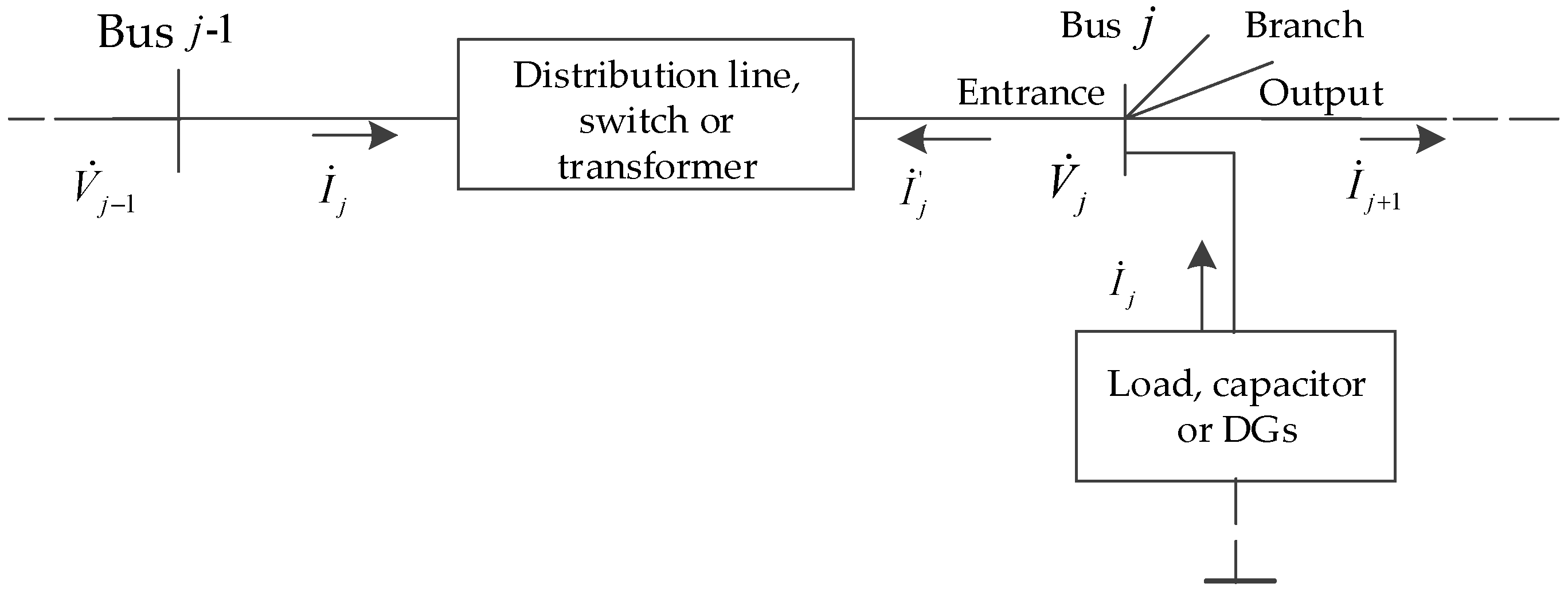
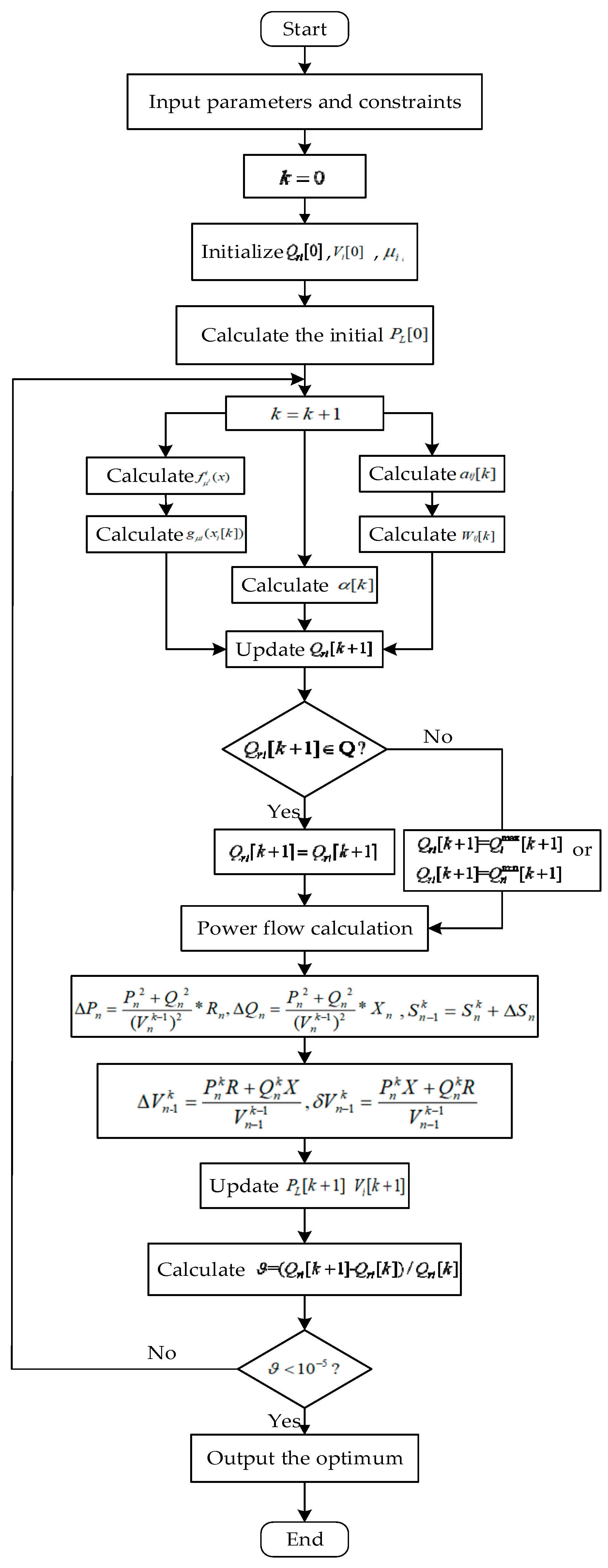
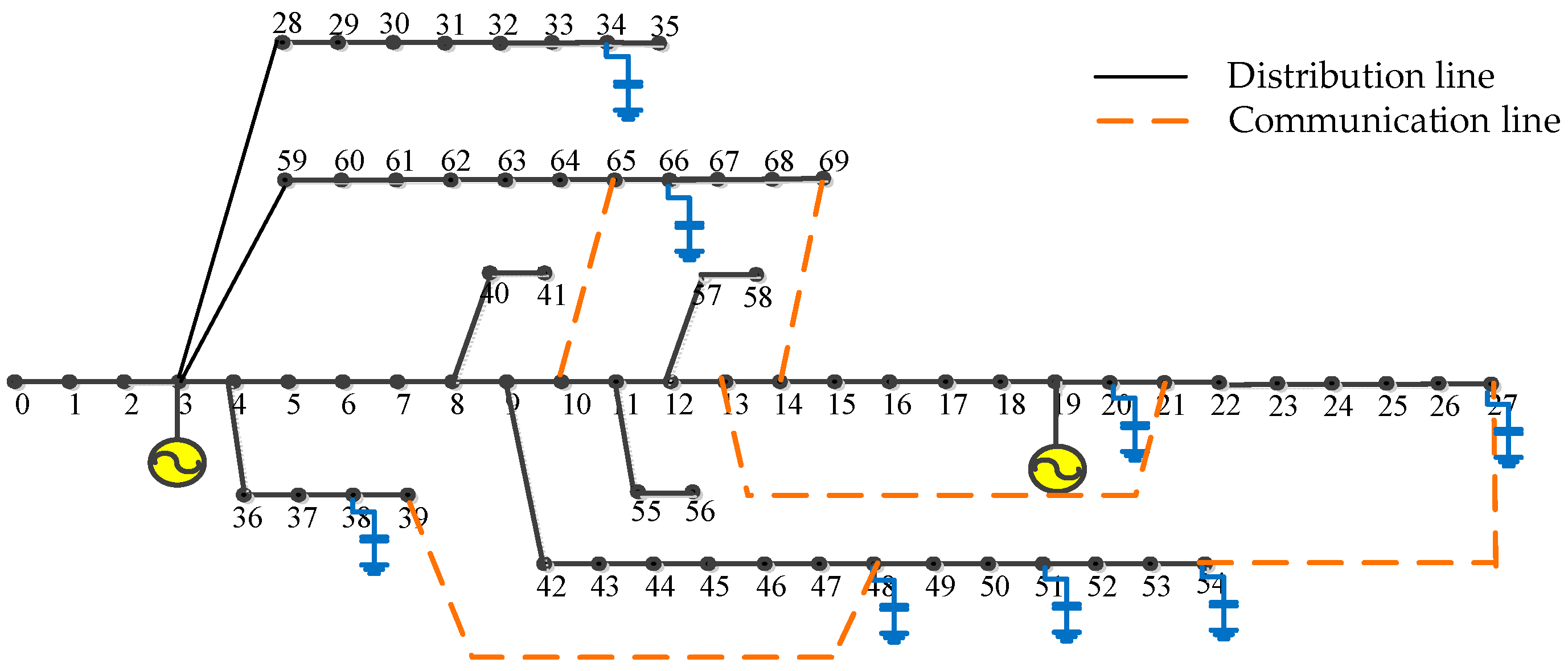
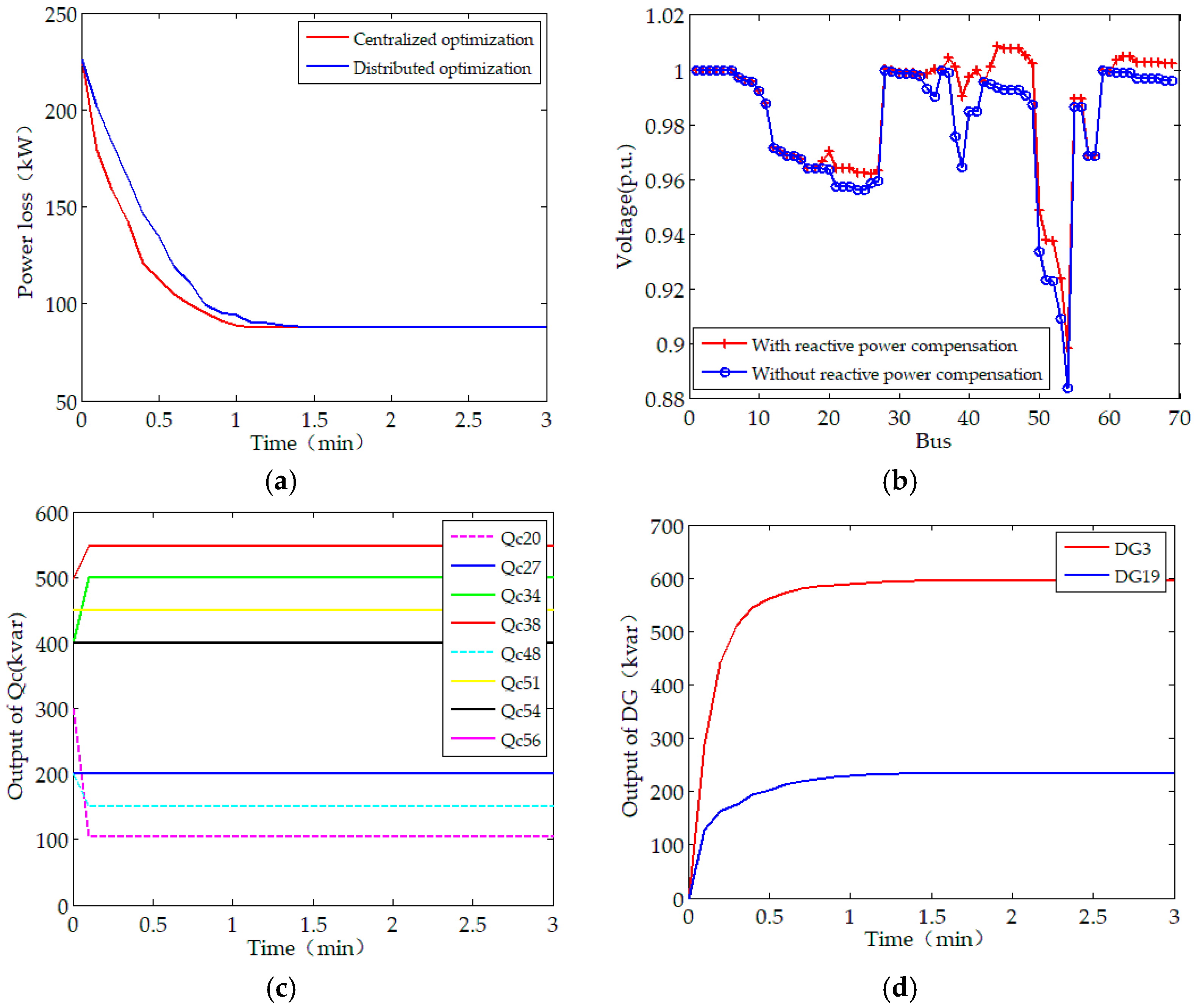
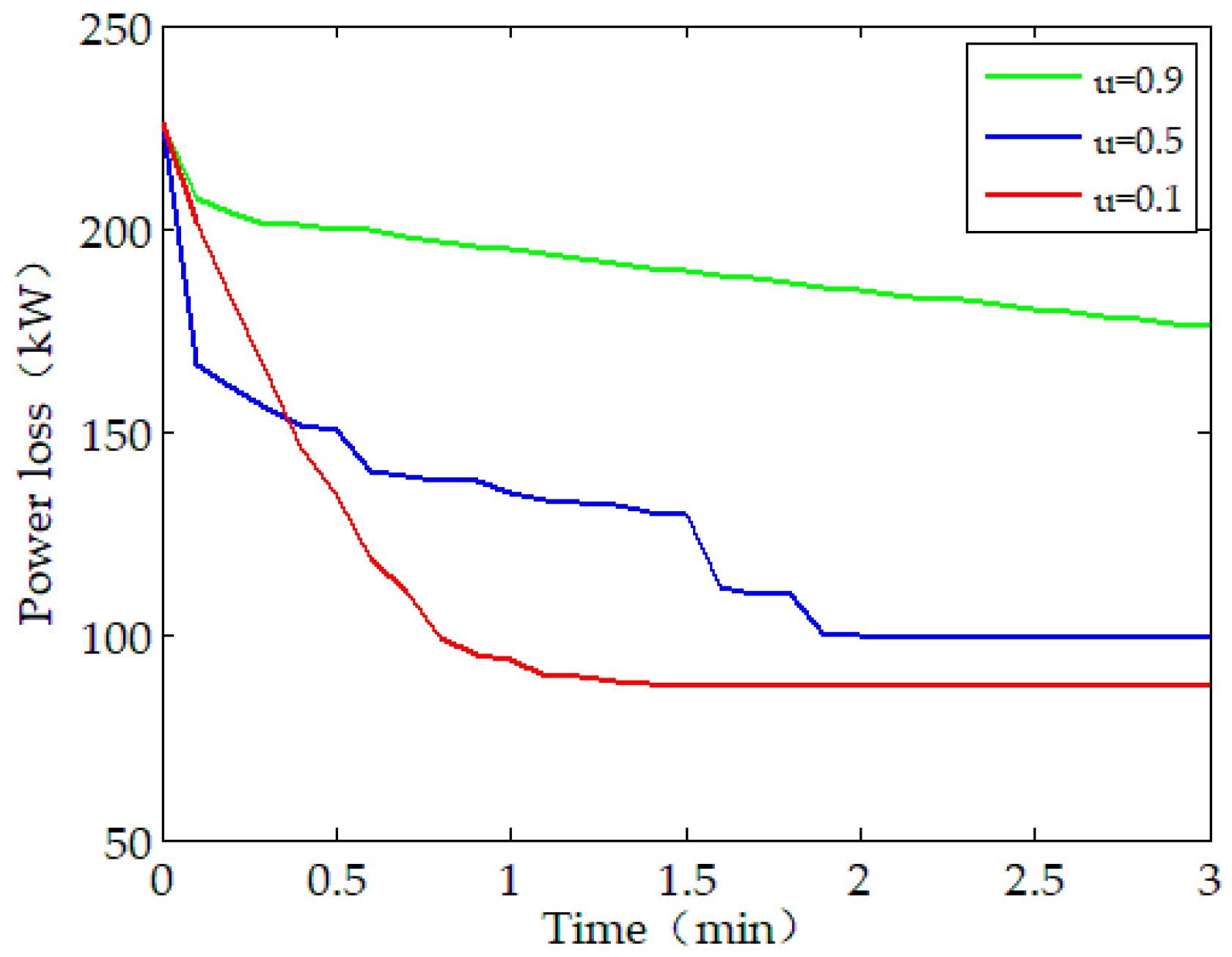


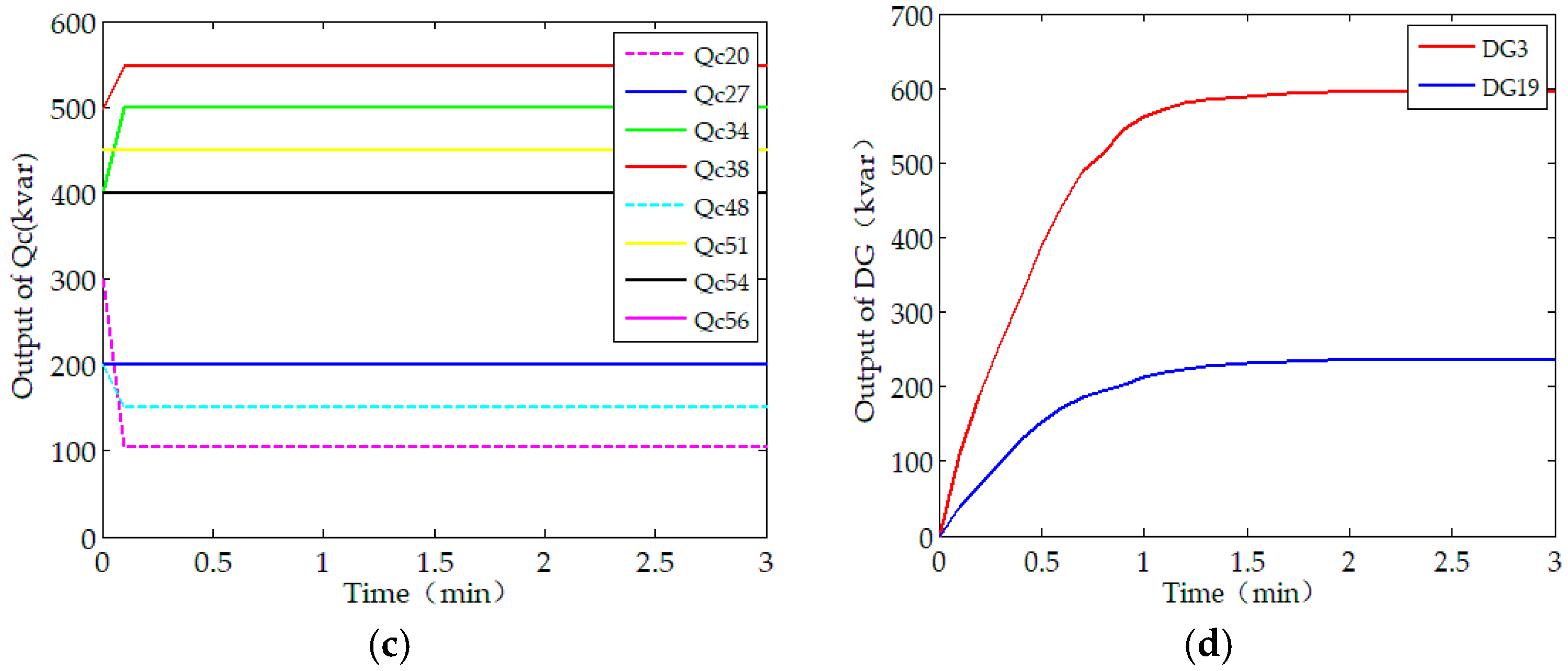
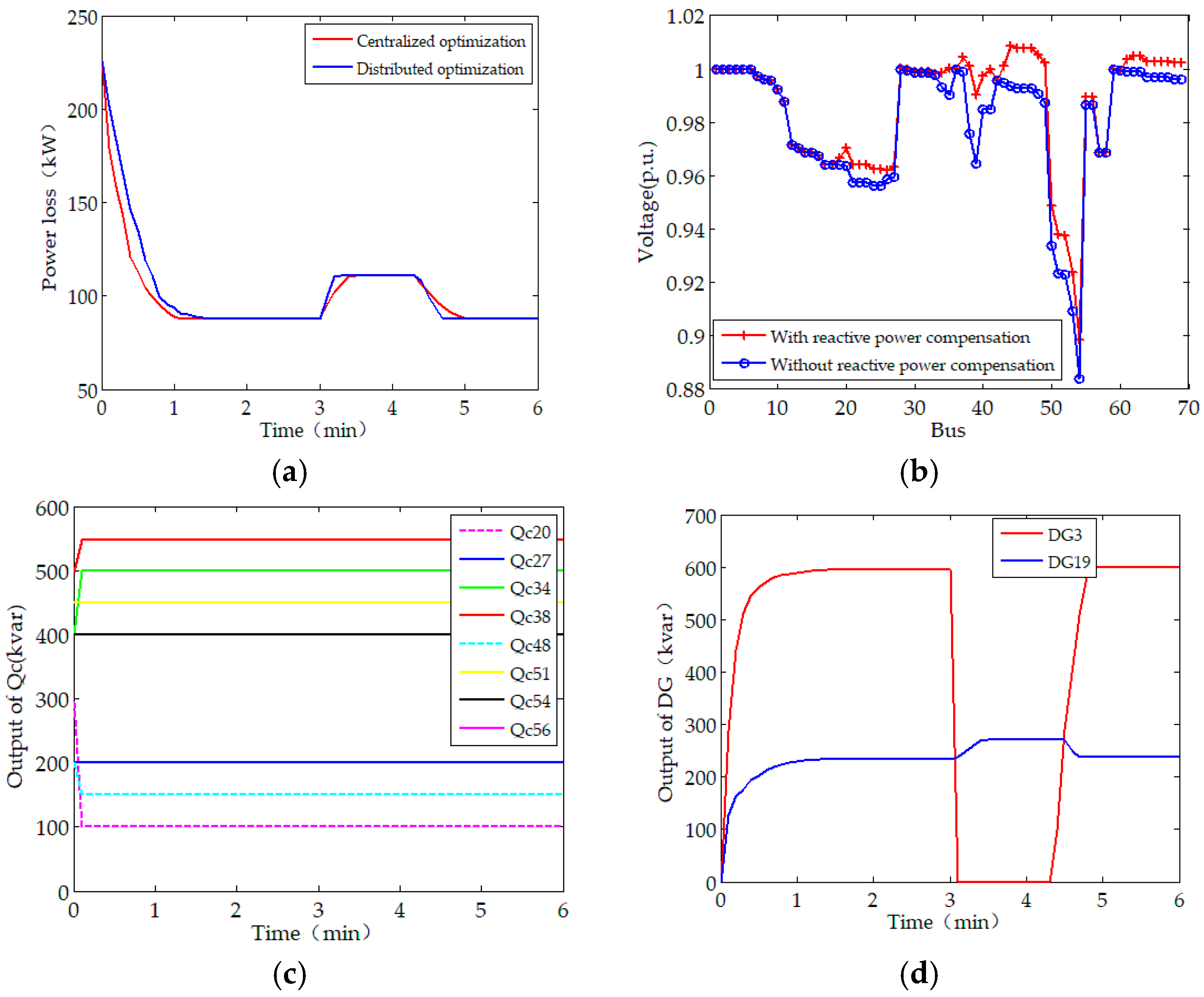
© 2018 by the authors. Licensee MDPI, Basel, Switzerland. This article is an open access article distributed under the terms and conditions of the Creative Commons Attribution (CC BY) license (http://creativecommons.org/licenses/by/4.0/).
Share and Cite
Xie, J.; Liang, C.; Xiao, Y. Reactive Power Optimization for Distribution Network Based on Distributed Random Gradient-Free Algorithm. Energies 2018, 11, 534. https://doi.org/10.3390/en11030534
Xie J, Liang C, Xiao Y. Reactive Power Optimization for Distribution Network Based on Distributed Random Gradient-Free Algorithm. Energies. 2018; 11(3):534. https://doi.org/10.3390/en11030534
Chicago/Turabian StyleXie, Jun, Chunxiang Liang, and Yichen Xiao. 2018. "Reactive Power Optimization for Distribution Network Based on Distributed Random Gradient-Free Algorithm" Energies 11, no. 3: 534. https://doi.org/10.3390/en11030534




